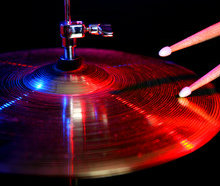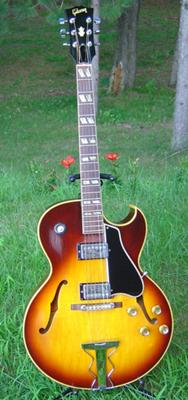How To Read Drum Tabs
Learn to Read Drum Tabs
Do you have trouble reading the drum tabs that you find on the internet? Do they seem like just a bunch of lines and weird symbols? Well, you are right--They are just lines and weird symbols. The good news is that with a little knowledge, those lines and symbols can turn into a meaningful road map that leads to playing your favorite songs. You CAN learn to read drum tabs!
There are a couple of general types of tabs. The first is:
ASCII Tabs
These tabs are the majority of tabs that you find free on the internet. Their popularity is in great part due to the fact that the author does not have the expense of purchasing software to write the tabs. The viewer also needs no software.
The main drawback to this tab format is that it is very difficult to read the rhythmic values. Look at this example:

The small dashes represent 16th notes. As you can see, even with the counting written above, it is difficult to determine at a glance just what part of the beat a particular note falls on.
The notation to the left tells which part of the drum set is to be played. Cymbals are usually notated with x's and drums with o's.Depending upon the complexity of the tab,there can be many lines to represent all of the drums and cymbals.
In this example, the first measure says to play the cymbal, snare, and bass drum all together on One, Two & and Four.
As you can see, this may not be the BEST way to read drum tabs.
Traditional Notation Tabs
These tabs are created by music notation software. The one drawback is that since the author must invest in the software and the viewer usually needs the software to view them, they are not free. On the PLUS side,it is much easier to read drum tabs written in this format.
Here is an example:

In this tab, each part of the drum set has its own line or space. See the notes on the bottom space? Those are Bass Drum notes. The notes on the 3rd space up are Snare Drum notes. The notes sitting on the top line are cymbals--the little black triangle means to play a crash cymbal and the open circle means to play the hi-hat partly open.
The best thing about this tab is that it notates rhythm EXACTLYin traditional rhythmic notation. If you are a drummer, you NEED to develop the ability to read rhythms. It is one of the essential tools of a drummer.
Where can you find good tabs?
You can find the first type of tab--the ASCII tabs--everywhere on the internet. They are usually free. We have already seen the difficulty of reading these tabs. Maybe it would be worth a little extra work reading them if they were accurate. The fact is that these tabs are rarely accurate.
One major reason for this lack of accuracy is that it is so difficult to notate rhythm with this format. Add to this the fact that since they are free to the author, the majority of these free tabs are written by amateurs or inexperienced drummers who may not be able to notate rhythms accurately. This presents a major problem for those who want to read drum tabs to learn their favorite songs.
Transcribing music requires a professional ear and a trained musician.
The second type of tab--the Traditional Notation Tabs--can be found on the internet, but they are not free. Most of them require that the viewer purchase the same type of software that was used to write the tab.
If you don't want to invest in a software program, I have begun to write professional drum tabs using Guitar Pro and converting them to PDF files that you can download and print. The tabs are guaranteed accurate.
You can check out the current selection of tabs (more being added daily), get a free sample tab, and even request any tab that you want by going here--
It will be worth your while to at least check out these tabs. They are ALMOST
Free. The pride that you can take in playing your favorite songs
correctly is well worth the small fee per tab. At least pick up the
free sample and try it out!
Leave "How to Read Drum Tabs" and Go To "Almost Free Drums Tabs"





New! Comments
We welcome your comments and ideas! Leave a comment in the box below.